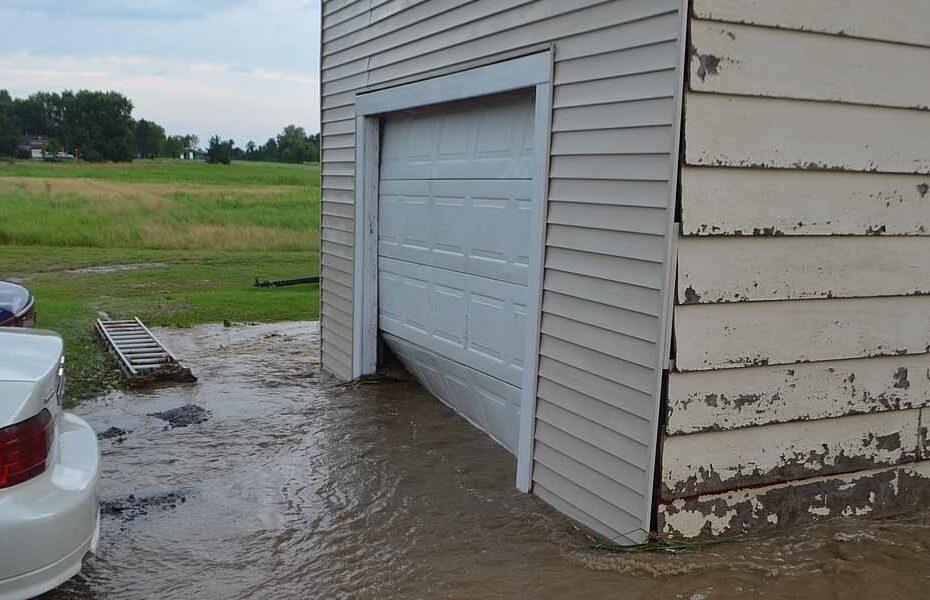[ad_1]
While there are plenty of free ways to prepare for emergencies, disaster prepping is usually expensive.
But if you play your cards right, you can get a tax deduction or even a refund for disaster prepping. Here are some of the ways.
Disaster Preparedness Training
Self-employed or own a business? You can deduct disaster prepping “training” expenses. This means guides, books, and consultations you pay for.
Solar Panels
Installing solar panels is one of the best ways to prepare for power outages. Under the Federal Government’s Residential Energy Credits, you can get a tax credit of 30% of the solar installation cost. More info here.
Your state may also offer tax credits or deductions for solar panels too.
Power Stations
A power station is essentially a giant battery with outlets on it. During a power outage, you simply plug your devices into the power station. Starting in the 2023 tax year, battery storage – including power stations — of 3kWh are eligible for a Residential Energy Credit. Learn about power stations here.
Other Residential Energy Credits
In addition to solar panels, the Residential Energy Credit covers:
- Solar water heating
- Small wind power
- Geothermal heat pumps
Installing any of these systems will help you be better prepared for any of the many disasters that cause power outages.
Wood Stoves
Remember when the Texas grid outage caused people to freeze in their homes? Unfortunately, winter power outages are only increasing in frequency – so you need to be prepared with an emergency heating method.
If you choose a wood stove, pellet stove, or biomass heating system that meets Energy.gov requirements, it could qualify for a tax credit under the Energy Efficient Home Improvement Credit. The credit is 30% of the cost, up to $2000.
Fortifying Doors
Stronger doors keep out intruders and protect your home against disasters like hurricanes.
The government doesn’t directly give tax credits for improving your doors. However, if you choose Energy Star doors, they qualify for the Energy Efficient Home Improvement Credit.
You can claim 30% of the project with a limit of $250 per door. Garage doors are even included in certain situations!
Impact Windows
Like doors, installing impact windows to protect against hurricanes won’t necessarily qualify for a tax credit. But guess what? Many hurricane impact windows meet Energy Star requirements, so you can get the Energy-Efficient credit. For windows, the credit is up to $600.
Foam Insulation Against Floods
Floods are the most common natural disaster affecting homes in the United States, and flooding will only get a lot worse over the next decade. But did you know what foam insulation can protect your home against flood water?
You can use the Energy Efficiency credit to get some of the money back for installing foam insulation flood barriers around your home.
Deductions for Farmers and Agricultural
Are you embracing your dream of becoming self-sufficient by living off grid? You might qualify as a farmer, which means you are eligible for many agricultural deductions for things like farm equipment or soil and water conservation expenses.
Backup Power Systems
Do you have a medical device that requires power? You can deduct any home renovations that count as medical expenses, including installing a backup power system.
If you play your cards right, you could utilize the deduction for other disaster-prepping costs. For example, if you are in a wheelchair, you could get a deduction for grading your property for easier access—and that same grading could protect against floodwaters.
Building a Storm Shelter
Both Alabama and Oklahoma provide tax credits for creating storm shelters. Considering how many tornadoes rip through these states, this is a worthy investment!
Rainwater Harvesting
You must store at least 14 gallons of water per person for emergencies. If you aren’t great at conserving water, you are better off storing 60-120 gallons per person.
That’s a lot of water to store! To ensure you have enough water, installing a rainwater harvesting system is a smart prepping move.
The Federal Government offers a tax credit of up to 26% of the system’s cost. Many states and local governments also offer credits and rebates.
Earthquake Retrofit
Some cities (Berkeley, for example) offer rebates for earthquake retrofit work. Even if your city doesn’t, you can still benefit from retrofitting under capital improvements deductions (see below).
Capital Improvements
The IRS treats “capital improvements” differently than repairs. You can’t get an immediate tax break on these, but they can be deducted if you ever sell your home. So keep track of any improvements such as these which help protect your home from disasters:
- Storm windows
- Walls and landscaping against intruders
- Drainage systems to prevent flooding
- Earthquake retrofitting
- Wildfire fortifying
- Reinforcing roofs
- Bracing garage doors
[ad_2]
Source link
